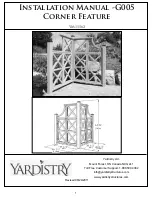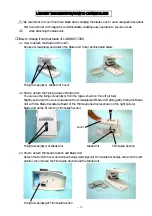
CONVERSION OF HARDNESS VALUES
7 Conversion of hardness values
The
alphaDUR mini
can convert hardness values to another hardness scale.
The tables DIN EN ISO 18265 - Feb.2014 and ASTM E140 - 12b (2019) are
used for the conversion. These tables partly contain values, which are outside
of the definition area of the standardized hardness testing method, but may be
used as approximate values. In the
alphaDUR mini
, these approximate values
are considered in the conversion and shown in red on the display.
When applying revaluations, it should be noted that there is no universal
conversion relation. That is why the conversions should only be used within a
material group. The impact of different indenters and test loads should always
be considered. The information given in the standards on the applicability,
inaccuracy and the difficulties when converting hardness values should be
taken into account. Before using the conversion it should be checked if all
requirements for the conversion are met.
The
alphaDUR mini
determines the Vickers hardness. In contrast to the
classical method according to DIN EN ISO 6507-1, the measurement is done
while the test load is applied. Still the results of the UCI-Vickers and the
Standard-Vickers are comparable to the classical method, as long as the elastic
part of the deformation is negligible compared to the plastic part. This applies to
metals and e.g. ceramics.
To change the hardness scale, select the menu item
Measuring parameter /
Edit / Hardness scale
(see chapter 6.2.1) or press the SCALE key in the
measuring window. The SCALE KEY is deactivated if the measured data
storage is activated.
The ranges of validity for hardness conversion are shown in chapter 15
Appendix 1: Hardness conversion validity ranges
23
Summary of Contents for alphaDUR mini
Page 1: ...alphaDUR mini Manual Version 1 5...
Page 2: ......
















































